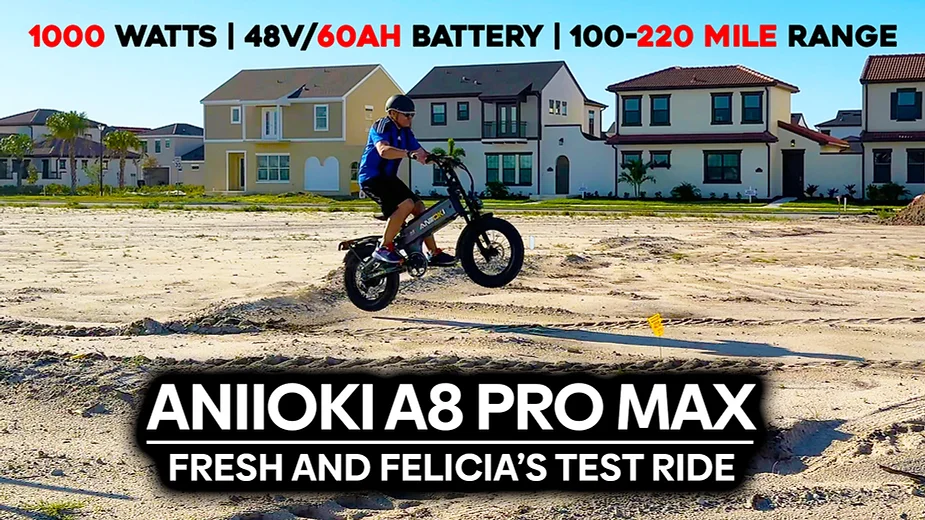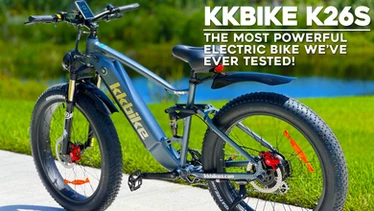We spent over $2000 on equipment and beans, plus countless weeks researching how to brew healthy coffee. Here’s what we found.

A few decades ago, several flawed medical studies told us coffee would kill us. A host of new studies show just the opposite – learning how to brew healthy coffee each day may save your life.
Where did “Cup of Joe” come from?
The story goes in 1914 then Secretary of the Navy Josephus Daniels banned alcohol from his ship. Sailors revolted and began drinking coffee, calling it “cups of Joe” to poke fun at Josephus. Another theory is that “Joe” is the simplified form of the word “jamoke,” which began as a nickname for coffee in the 1800s, combining the words “Java,” and “mocha,” shortened over time to a “cup of Joe.” There are some other theories, but no one really knows for sure.
Coffee has caffeine – plus other important nutritional benefits.
We already know coffee has caffeine, a necessary stimulant for millions of people worldwide, including me. But it’s also high in antioxidants, and a source of Vitamin B2, Magnesium, and super helpful polyphenols.
But there is always a downside! A Journal of Marketing study finds that drinking a caffeinated beverage before shopping leads to buying more “high hedonic” products such as scented candles and fragrances, and caffeine heightens the olfactory senses. So don’t drink coffee before heading into Bath and Body Works unless you brought your SUV.
I’ve recently learned many coffee shops might be taking your money and serving you a grotesquely unhealthy hot cup of pesticides topped with microplastics.
Coffee Health Benefits – Backed by Science
And another coffee surprise! According to Johns Hopkins Medicine, learning how to brew healthy coffee potentially has these other nine exciting health benefits as well:
- Recent studies found that coffee drinkers are less likely to die from some of the leading causes of death including coronary heart disease, stroke, diabetes, and kidney disease.
- Coffee drinkers may process sugar better. Studies found that people who drink more coffee are less likely to get type 2 diabetes.
- Drinking one to two cups of coffee a day may help ward off heart failure. That’s where a weakened heart has difficulty pumping enough blood to the body.
- Coffee drinkers are less likely to develop Parkinson’s disease. Caffeine may also help those with the condition better control their movements.
- We’re not quite sure why, but coffee seems to have a protective effect on your liver.
- Dark roast coffee (less acidic) seems to decrease breakage in DNA strands. DNA breakage can lead to cancer or tumors.
- Decaf or regular coffee drinkers were 26 percent less likely to develop colorectal cancer.
- The caffeine in two cups of coffee may provide significant protection against developing Alzheimer’s disease. Research found that women aged 65 and older who drank two to three cups of coffee a day were less likely to develop dementia in general.
- For women, drinking at least one cup of coffee a day is associated with lower stroke risk, which is the fourth leading cause of death.
The Downside
The bad news is it’s difficult to find coffee that’s not tainted with pesticides, Bisphenol-S (BPS), or both, which will pretty much wipe out all those healthy benefits. If you think spending upwards of six bucks a day at your trendy little local coffee shop because obviously, they know how to brew healthy coffee, you might be wrong. I’ve recently learned many coffee shops might be taking your money and serving you a grotesquely unhealthy hot cup of pesticides topped with microplastics. More of that in a bit.
Big Coffee: Arabica and Robusta
First, let’s chat about coffee itself, which unfortunately is problem number one. Coffee is one of the most widely traded commodities in the world – with over 12 billion pounds of coffee produced annually. Its beans are the seeds of a fruit called a coffee cherry. Coffee cherries grow on a wide variety of species of coffee plants, ranging from bushes to trees.
There are two main types of coffee species, Arabica and Robusta. Arabica, the most popular coffee, originates from Ethiopia and produces a mild, flavorful tasting coffee. However, it’s a little pricey because the plant is finicky and expensive to grow. The Robusta coffee plant is more resistant to disease and can withstand more changes in climate.
Coffee beans are roasted at a high heat to produce a chemical change that releases the rich aroma and flavor that we associate with coffee. Roasting levels range from light to medium to dark. The lighter the roast, the lighter the color and roasted flavor — and the higher its acidity. Dark roasts produce a black bean with little acidity but a slightly more bitter roasted flavor. A medium grind is the most common and used for most coffee makers. A fine grind is used for deeper flavors like espresso, which releases oils (uh oh – more on this later). A coarse grind may be used in some coffee presses.
Decaffeinated coffee is an option for those who are sensitive to caffeine. To remove caffeine, producers use chemical solvents which bind to caffeine, and both the caffeine and solvents hopefully evaporate when the beans are rinsed and dried. At least 97% of the caffeine must be removed to carry the decaffeinated label, so there may be trace amounts of caffeine. Some naturally occurring chemicals in coffee beans that affect flavor and scent may be destroyed during decaffeination.
Organic vs Non-Organic Coffee
Here’s the rub. Most big-name commercial coffee is imported into the United States, and there is little to no oversight or regulation on how much residual pesticides are permitted when the beans are imported and sold. This leaves you, the coffee drinker, vulnerable to many potentially dangerous substances, including chemicals banned from use in American agriculture. In 2016, the World of Organic Agriculture reported 91.5% of all processed non-organic coffee beans are heavily treated with pesticides, synthetic herbicides, and other potentially dangerous chemicals. Brazil, the world’s leading coffee-growing region, has increased pesticide usage almost 800% from levels reported in 1990.
However, in certified organic coffees, there are no synthetic fertilizers or chemicals used in growing or production, which means cleaner beans, air, land, and water. The coffee is grown with only organic fertilizers, like coffee pulp, chicken poop, or compost. Gross, but better than potentially dangerous chemicals most of us can’t even pronounce. If your coffee ain’t certified organic, you might be ingesting residual traces of some pretty nasty stuff.
Personally, I’m a big fan of what they’re doing at Purity Coffee. Great-tasting certified organic coffee, enhanced antioxidants for health, and they’re environmentally conscious too.
Potentially Dangerous BPA and BPS: Plastic in Coffee Makers
Most food-grade plastic is now BPA-free, but BPS might be worse. Our journey uncovered that most of the popular coffee makers all use plastic that comes into contact with your hot water at some point. A basic scientific principle is that heat can cause expansion, which can then allow things to melt – or leach – at certain temperatures. Many plastics can leach chemicals at room temperature, like in some brands of bottled water. We’re starting to think any potable water and plastic are never a good mix. We’ve switched to glass bottles in our home.
Big Plastic has done a remarkable job advertising how safe plastic is supposed to be. You’re probably thinking. “Everything is BPA-free now, so it’s all good, right?” But that’s sadly wrong. Recently, it has been proven that Bisphenol-S, like its predecessor, Bisphenol-A, also leaches endocrine-disrupting molecules into water. Some studies say BPS might even be worse than BPA. In case you need a refresher, here are some of the awful things BPA or BPS can do to your body:
- High blood pressure
- Ovarian cysts and infertility
- Endocrine disorders
- Type 2 Diabetes
- Certain types of cancer
Everything Begins with Water
Speaking of water – ALWAYS filter it yourself! We’ve done a study on the dangers of tap water in the video below. Bottled water may have traces of BPS in it, and tap water is downright dangerous in some places. Any good cup of Joe begins with a cup of clean water. We use either reverse osmosis, ZeroWater, or LifeStraw filters depending on where we are.
So, with all these potential problems – how in heavens do you make a healthy cup of organic coffee? Here are some of the more popular ways, and the pros and cons of each.
What is The Healthiest Way to Make Coffee?
French Press Coffee

Most French presses are made from glass and stainless steel, so there’s no problem with plastic exposure. Check. And you’ve got certified organic beans, so that’s great too. You’re in control! Make it as hot or strong as you like. All you do is add ground coffee beans to the French press, and then add boiling or hot water. Wait a few minutes, then press down for a super-fresh tasting cup of coffee.
The problem with French press coffee is there’s no filter to absorb coffee oils that are extracted during heating. Coffee oils are most potent in coffees where the grounds have the longest contact with the water during brewing, which is why espresso is terrible for you! Water spends a lot of quality time with coffee grinds in a French press, resulting in greater concentrations of cafestol, a chemical found in coffee oils that has been found to decrease bile acids and neutral sterols, potentially reducing your body’s ability to metabolize and regulate cholesterol. I decided to ditch my French press because of this.
Electric Coffee Makers
Brewing in a typical electric coffee pot with or without a filter has relatively low levels of cafestol, as the water zips through the grounds quickly, and most of the cafestol is caught in the filter. However, you’ll have to worry about the leaching plastic from the heated plastic water storage containers and the filter basket. This includes but is not limited to all major brands including Keurig. Although it is incredibly fast and convenient, this is probably not how to brew healthy coffee.
Moka Pot
Why not be like our very stylish European bros and simply brew up a fresh cup of coffee right on your stovetop with a Moka Pot? Simply fill half of the pot with boiling water, add fresh coffee grinds to the filter basket on the top, and set over heat. This works by using the pressure from the boiling water to push the coffee into the chamber of the Moka Pot.
I had one. Although most Moka Pots are meant for espresso, you can make coffee with them by diluting the formula. Most are made of aluminum, and I understand there may be reasons to be concerned about aluminum leaching. The jury is still out on the potential problems with the connection between aluminum and Alzheimer’s, so personally, I’m going to avoid ingesting any more than I already do. Plus, there’s no filter for the cafestol.
Percolators

Back in the 1970s every kitchen counter had a percolator for coffee. The percolator works much the same way a French press works, except there’s no pressing. My Colletti Bozeman percolator uses no electricity, there’s no plastic, it uses paper filters, and the company is run by American Veterans. I thought my problems were solved.
But, the water spends a lot of time rolling through those coffee grinds, leaching more cafestol and whatever else from non-organic beans. Hoping the filter is strong enough to capture all the cafestol. Also, the pot has to get super-hot before the percolation begins. Take into account evaporation and timing, and your coffee’s taste will always seem to be a surprise in some percolators. Oh, you’d better enjoy roughing it, because there’ll probably be some grinds in your cup.
The Healthiest Way to Make Coffee: Pour-Over

In our long search of how to brew healthy coffee, we stumbled upon the pour over method. This is a simple method where you pour boiling water in a glass container over medium or fine ground coffee beans using a paper filter. This method does take a bit longer than making your coffee in a French press because you’ll need to boil your water first. Then slowly pour the boiling water around the grinds in small in circles. The exposure to the grinds is quick, so the filter will absorb most of the cafestol. You can control the strength of your coffee by the amount of grinds you decide to use.
I’ve decided to stick with the pour-over method. I’m using a glass kettle to boil my water, and the Chemex pour-over system with paper filters. It’s an all glass system, easy to clean, environmentally friendly, and my coffee always tastes wonderful.
What about INSTANT coffee?
Instant coffee is made by brewing coffee, and then vaporizing it, or freeze-drying it, which removes all the water from the liquid leaving crystals or powder. A potential downside of instant coffee is that it contains twice as much of a chemical called acrylamide, a potentially harmful yuck that forms when coffee beans are roasted. It has the potential to damage the nervous system and increase the risk of cancer when consuming high levels. Fortunately, the amount of acrylamide in most instant coffee is below the amount shown to be harmful in studies.
There is less caffeine in instant coffee than regular, where one cup of instant contains between 30 and 90 milligrams of caffeine compared to regular coffee, which contains between 70 and 140 mg. If you need the convenience of instant, Anthony’s Organic is a great choice.
So, let’s recap our search for the how to brew healthy coffee.
- Organic coffee only. Avoid the pesticides, get more nutrients.
- Your hot water shouldn’t ever touch plastic.
- Minimize the exposure time of your water to your grinds.
- A paper filter should remove most of the potentially bad cafestol.
- That’s it! You’re ready for a healthy, delicious cup of coffee! Enjoy.
Sources:
- Bisphenol S in Food Causes Hormonal and Obesogenic Effects Comparable to or Worse than Bisphenol A: https://www.ncbi.nlm.nih.gov/pmc/articles/PMC7071457/
- BPA, chemical used to make plastics, found to leach from polycarbonate drinking bottles Into humans: https://www.hsph.harvard.edu/news/press-releases/bpa-chemical-plastics-leach-polycarbonate-drinking-bottles-humans/
- What is BPA, and what are the concerns about BPA? https://www.mayoclinic.org/healthy-lifestyle/nutrition-and-healthy-eating/expert-answers/bpa/faq-20058331
- Why ‘BPA Free’ May Not Mean a Plastic Product Is Safe: https://www.nationalgeographic.com/science/article/news-BPA-free-plastic-safety-chemicals-health
- 9 Reasons Why (the Right Amount of) Coffee Is Good for You https://www.hopkinsmedicine.org/health/wellness-and-prevention/9-reasons-why-the-right-amount-of-coffee-is-good-for-you
- The Nutrition Source – Coffee: https://www.hsph.harvard.edu/nutritionsource/food-features/coffee/
- The Importance of Organic When it Comes to Coffee: https://puritycoffee.com/blogs/blog/importance-of-organic-pesticide-free-coffee
- Organic vs. Conventional Coffee https://www.info.equalexchange.coop/articles/organic-vs-conventional-coffee
- Link between coffee and cholesterol: https://www.healthline.com/health/high-cholesterol/coffee-link#coffee-and-cholesterol
- Grab a Coffee Before Shopping? You May Want to Think Twice https://www.ama.org/2022/07/19/grab-a-coffee-before-shopping-you-may-want-to-think-twice/
- Instant Coffee: https://www.mashed.com/213334/the-untold-truth-of-instant-coffee/
- Coffee consumption and health: umbrella review of meta-analyses of multiple health outcomes https://www.bmj.com/content/359/bmj.j5024
#coffee #coffeehealth #caffeine
As an Amazon affiliate, we may earn commissions if you purchase any of the products linked in this blog. That helps support this blog and our healthy efforts. Don’t worry – you won’t pay any more for these products – in some cases, you may save a few dollars!




